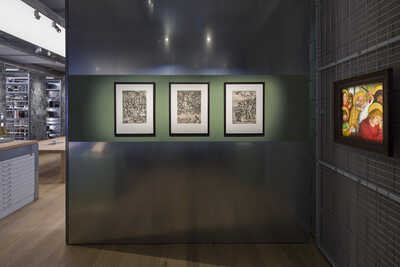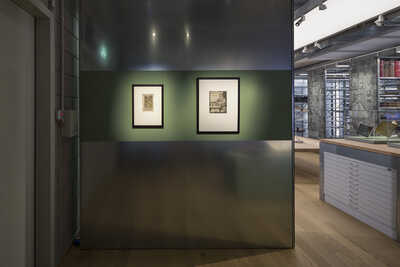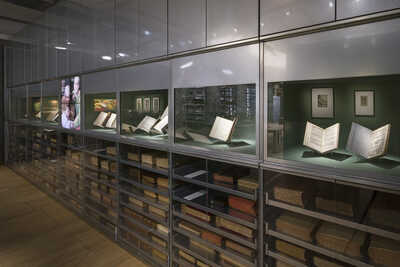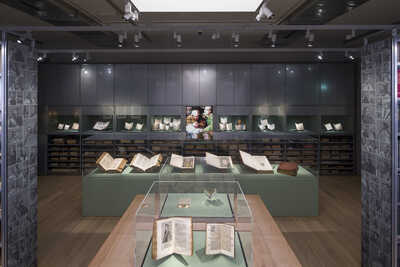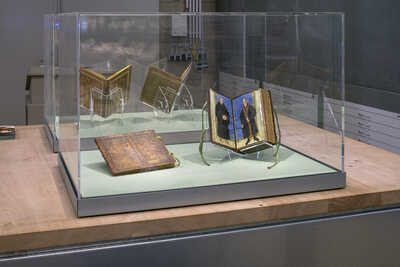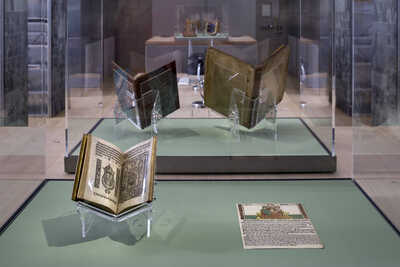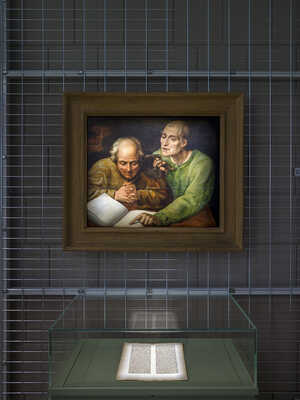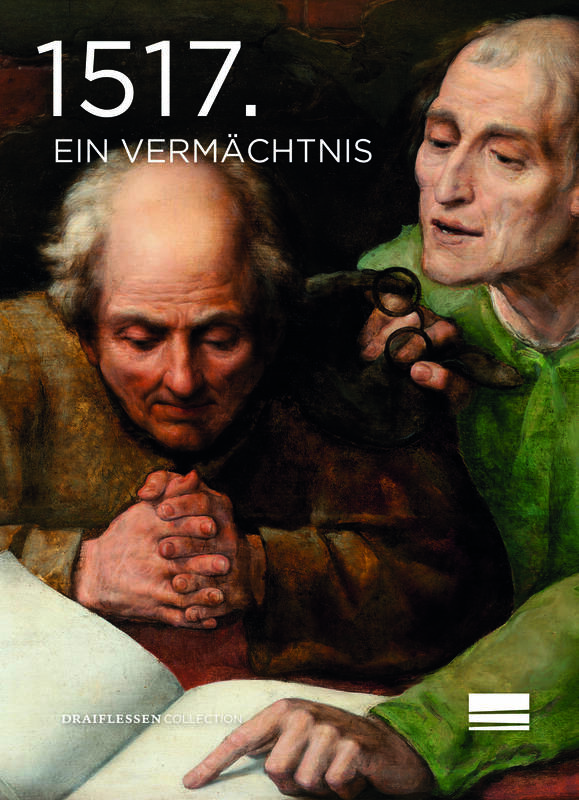STUDY ROOM | 13.04.2017 – 05.11.2017
1517. A LEGACY
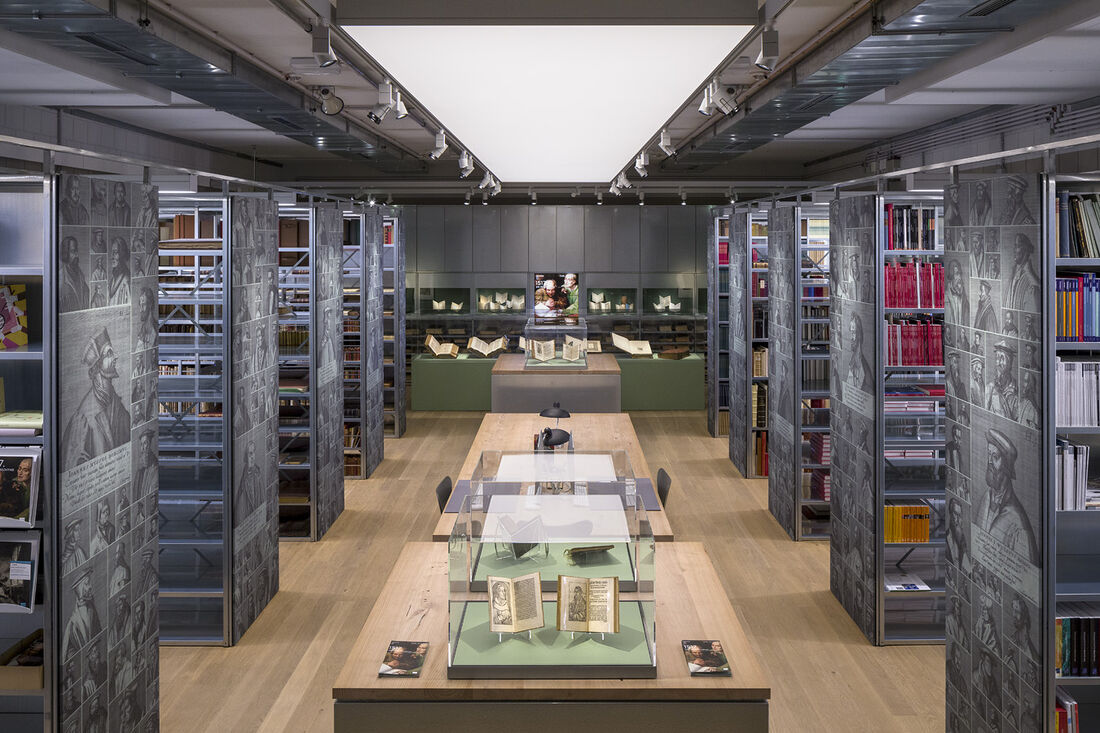
What kind of legacy did the reformers – above all Martin Luther, the figure that symbolized the Reformation – leave behind for us? What message about faith remains – even after 500 years? Since, although 1517 is regarded as the date of the Reformation, it is more than celebrating the '500-year anniversary of the posting of the theses' that is concerned. It is about more than the splitting of the Christian world into two denominational camps. In the ecumenical movement today, it is Martin Luther’s role as a reviver of faith that is emphasized rather than his role as a divider.
The cabinet exhibition draws from the rich fundus of the Liberna Collection on the topic of theology and Reformation and follows the tracks of Martin Luther. It presents printed matter from the then-new spirit of the times – from the first printed bible, the 'Gutenberg Bible', which was still written in the Latin language, to the first Bible printed in the German language prior to Luther’s new translation, the 'Mentelin Bible', to the final version by Luther, the 'Luther Bible'. In addition, other contemporary books document the effects on the European region.
The exhibition moreover attempts to provide insights into how theological differences and incomprehension led to a kind of 'culture of dispute through handbills', which brought about an epochal turning point. It also makes it possible to recognize that the image of the new faith is not only rosy: Luther’s new way of thinking hence encouraged anti-Semitism. From the perspective of today, the flood of images in the aftermath of the Reformation can only be described as a cultural catastrophe.
Last but not least, the effects of the Reformation are not all of a religious nature: The orthography of our High German today comes from Luther’s German translation of the Bible.
A publication will accompany the exhibition.
The cabinet exhibition draws from the rich fundus of the Liberna Collection on the topic of theology and Reformation and follows the tracks of Martin Luther. It presents printed matter from the then-new spirit of the times – from the first printed bible, the 'Gutenberg Bible', which was still written in the Latin language, to the first Bible printed in the German language prior to Luther’s new translation, the 'Mentelin Bible', to the final version by Luther, the 'Luther Bible'. In addition, other contemporary books document the effects on the European region.
The exhibition moreover attempts to provide insights into how theological differences and incomprehension led to a kind of 'culture of dispute through handbills', which brought about an epochal turning point. It also makes it possible to recognize that the image of the new faith is not only rosy: Luther’s new way of thinking hence encouraged anti-Semitism. From the perspective of today, the flood of images in the aftermath of the Reformation can only be described as a cultural catastrophe.
Last but not least, the effects of the Reformation are not all of a religious nature: The orthography of our High German today comes from Luther’s German translation of the Bible.
A publication will accompany the exhibition.
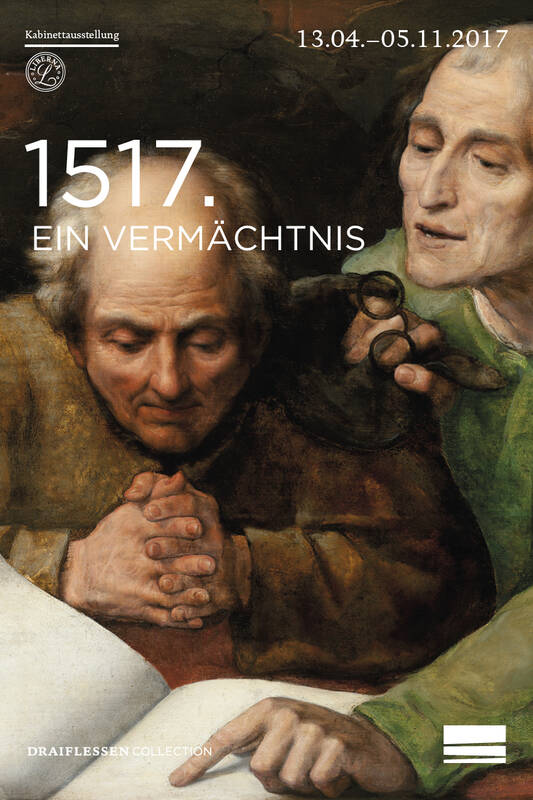
1517. A Legacy
| © Draiflessen Collection
